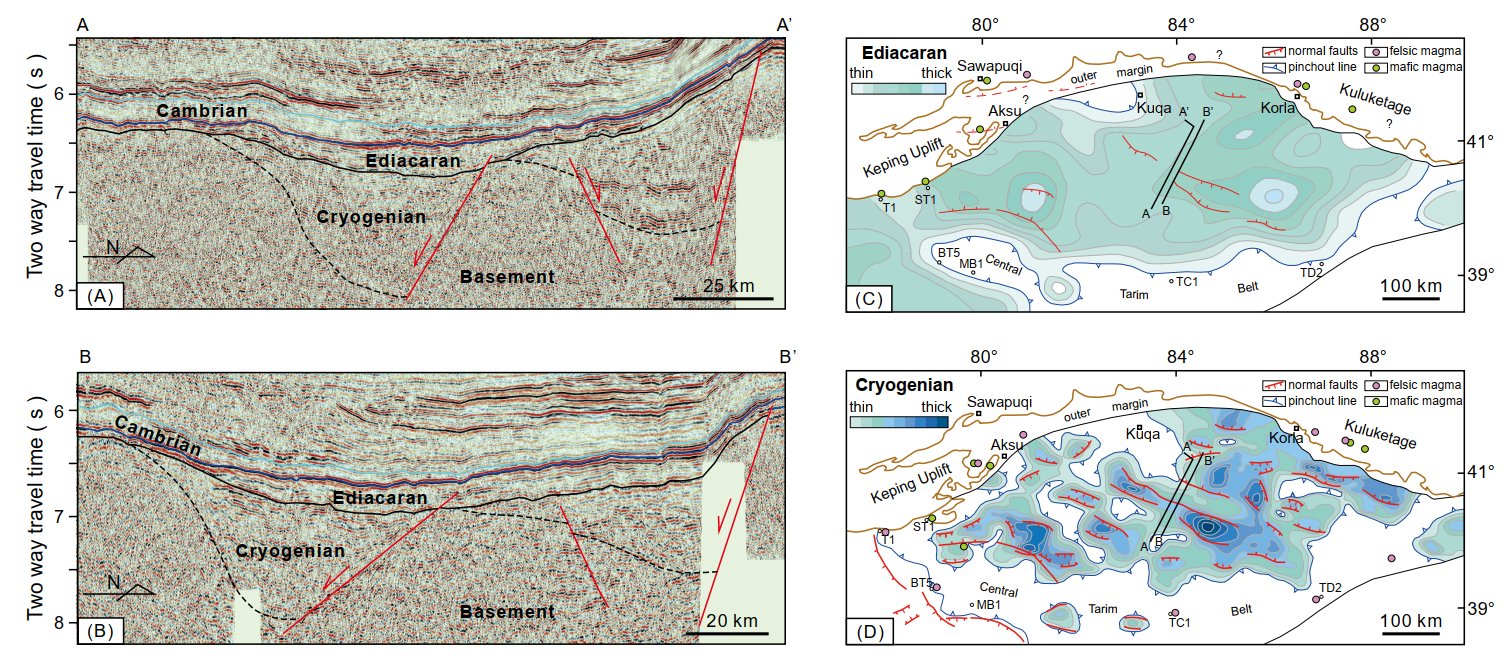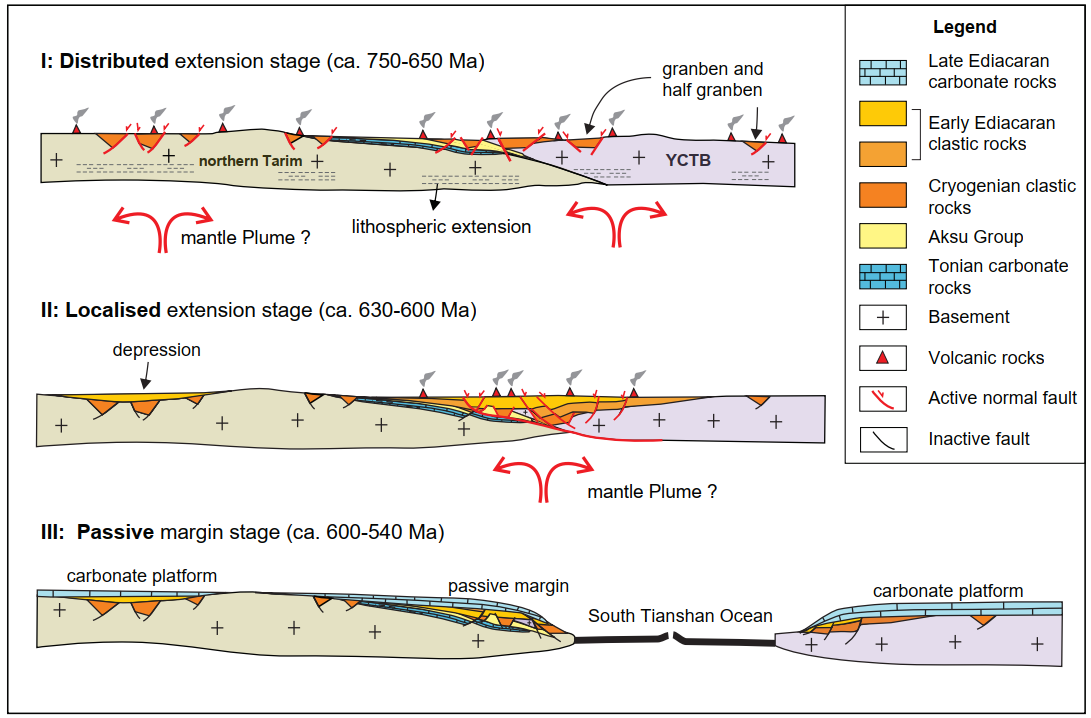Editor: 谢佳 Author: Time: 2023-10-24 Number of visits :155
The spatiotemporal evolution of late Neoproterozoic sedimentary basins and their tectono-magmatic context provide essential information regarding the continental rift process of the Tarim Craton during the fragmentation of the Rodinia supercontinent. In this work, the authors perform an integrated analysis of the Tarim basin and provide critical insights into the Ediacaran stratigraphic and tectono-magmatic evolution that shed light on the final rifting phase. The stratigraphic evolution from syn-rift clastic rocks to post-rift carbonates, as well as the eruption of the 615 Ma basalts and transition of detrital provenance observed in the northwestern Tarim basin suggest the development of a breakup succession at the end of the early Ediacaran period.
The margin-localized continental extension and mantle-derived volcanism during the early Ediacaran differed from the distributed extension and bimodal magmatism during the Cryogenian, indicating two-stage extensional modes and subsidences prior to the lithospheric breakup (Fig. 1). The rift system of the latter stage, which migrated oceanwards, eventually led to the continental breakup in the northwestern margin of the Tarim Craton. Comparable late Neoproterozoic stratigraphy and magmatic pulses between the Tarim Craton and Yili-Central Tianshan Block (YCTB) support their reconstructions as two conjugate rifted margins (Fig. 2). This study indicates that the rift-drift tectonics triggered by this prolonged episodic rifting between the Tarim Craton and the YCTB was closely associated with the final fragmentation of Rodinia.

Fig. 1 Seismic reflection profiles (A-B) with Neoproterozoic-Cambrian horizontal and structural interpretations in the north Tarim Craton. Distribution parttern of controlled normal faults and isopach map of residual strata of Cryogenian (Nanhua) and Ediacaran (Sinian) System (C-D) revealed by seismic and non-seismic interpretation.

Fig. 2 Cartoons show the tectonic evolution of the Tarim Craton and Yili-Central Tianshan Block in the late Neoproterozoic.
This work has been done by Prof. Hanlin Chen’ group and published in PRECAMBRIAN RESEARCH (a ZJUTOP journal). The first author Caiyun Wang is a PhD student. This research is supported by the National Natural Science Foundation of China (grant no. 42077223), the Basic Science Centre Programme for Multiphase Media Evolution in Hypergravity of the National Natural Science Foundation of China (grant no. 51988101), the National Key Research and Development Program of China (grant no. 2016YFC0601004), and the National Science and Technology Major Project Fund of China (grant no. 2017ZX05008-001).
Article information:
Wang C Y, Wu H X, Dilek Y, Li Y Q, Zhang F Q, Huang W K, Hong D D, Chen H L, Lin X B, Cheng X G. Basin filling and magmatic response to the migration of two-stage rifts: New insights into the late Neoproterozoic tectonics of the northern Tarim Craton. Precambrian Research, 2023, 397:107175.
